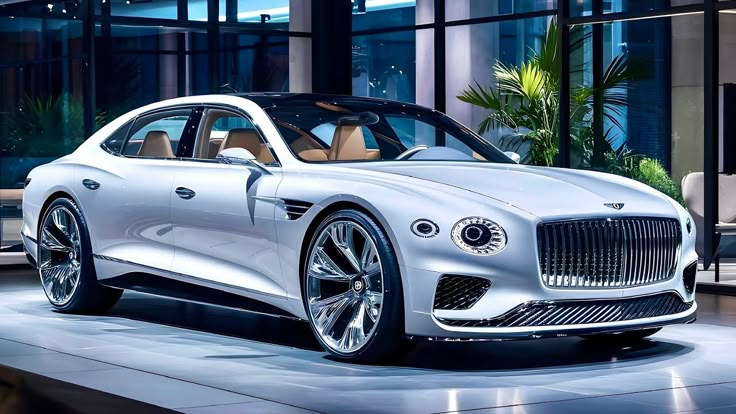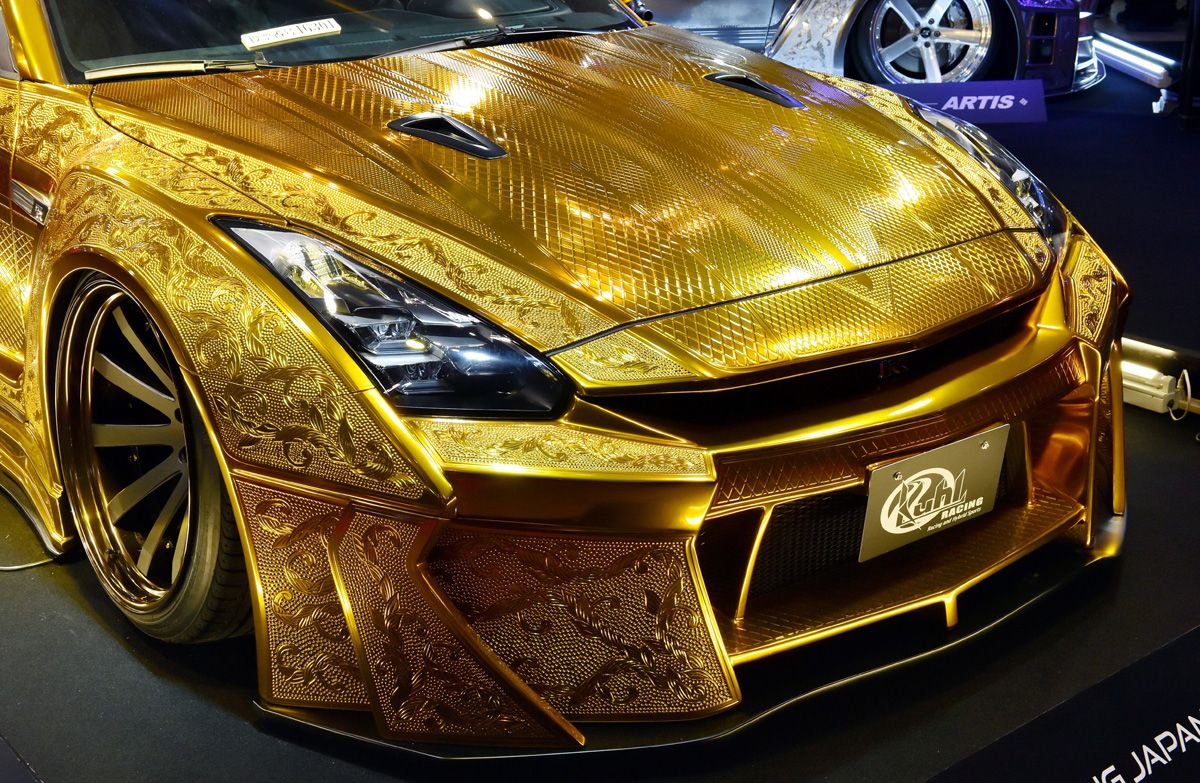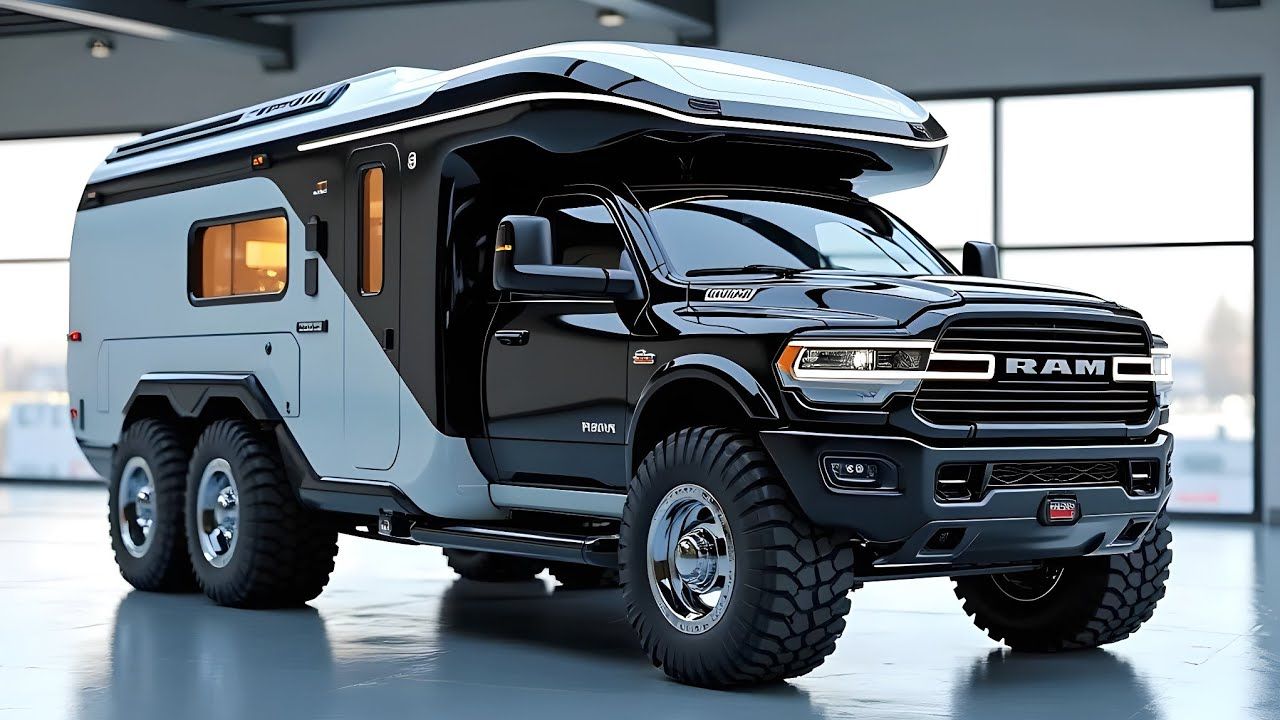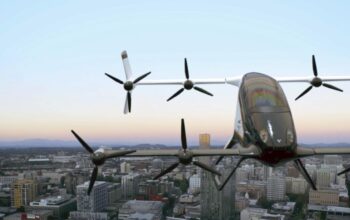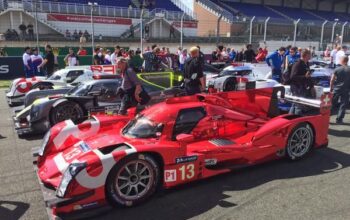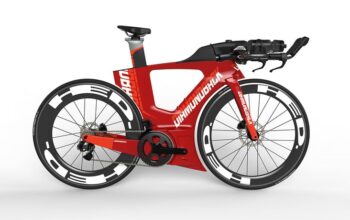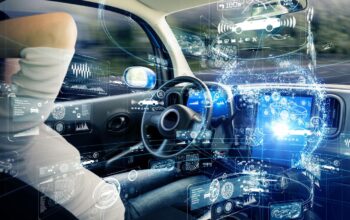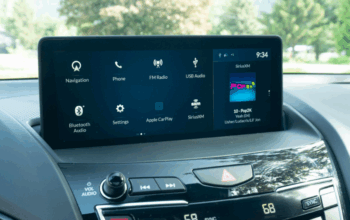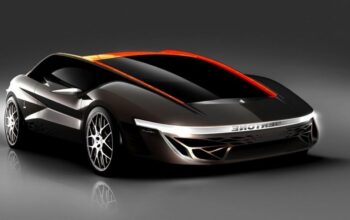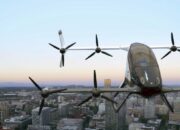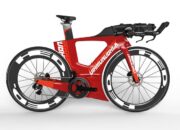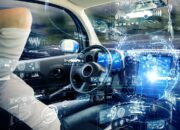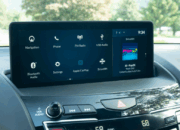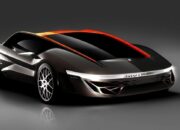The world of luxury vehicles is perpetually in motion, driven by relentless innovation that pushes the boundaries of engineering, design, and user experience. It’s no longer just about opulent materials or a powerful engine; today’s luxury automobiles are sophisticated hubs of technology, comfort, and personalized expression. This article dives deep into the cutting-edge innovations shaping the elite automotive sector, exploring how these advancements redefine what it means to drive, or be driven, in ultimate comfort and style. From revolutionary powertrain technologies to immersive in-cabin experiences and proactive safety systems, we’ll uncover the trends that are setting the standard for tomorrow’s premium personal transport.
The Evolving Definition of Automotive Luxury
For decades, luxury in automobiles was primarily defined by horsepower, handcrafted interiors, and prestigious badges. While these elements remain crucial, the modern interpretation of automotive luxury has expanded significantly. It now encompasses:
A. Technological Sophistication: Seamless integration of advanced connectivity, artificial intelligence, and intuitive user interfaces. B. Unparalleled Comfort and Wellness: Features designed to enhance physical comfort, reduce stress, and promote well-being during journeys. C. Personalized Experiences: Customization options that go beyond aesthetics, extending to dynamic driving modes and tailored digital environments. D. Environmental Responsibility: A growing emphasis on sustainable materials, eco-friendly manufacturing processes, and electrified powertrains. E. Proactive Safety and Driver Assistance: Systems that not only protect occupants in a collision but actively work to prevent accidents. F. Effortless Ownership Experience: Concierge services, remote diagnostics, and seamless software updates that simplify maintenance and enhance convenience.
This holistic approach means luxury car manufacturers are now competing on a much broader playing field, where innovation is the ultimate differentiator.
Electrification: The Silent Revolution Under the Hood
Perhaps the most profound transformation sweeping through the luxury automotive sector is electrification. Beyond merely reducing emissions, electric powertrains offer inherent advantages that align perfectly with the demands of premium vehicles.
A. Instant Torque and Seamless Power Delivery
Electric motors deliver maximum torque from a standstill, resulting in exhilarating acceleration that is both immediate and incredibly smooth. This characteristic provides a sensation of effortless power, a hallmark of true luxury. Unlike internal combustion engines, there are no gear shifts, no turbo lag, and no vibrations, leading to a serene and refined driving experience.
B. Whisper-Quiet Operation
The absence of engine noise is a significant contributor to the tranquil cabin environment expected in a luxury vehicle. Electric powertrains operate with minimal sound, allowing occupants to fully appreciate the high-fidelity audio systems, engage in undisturbed conversations, or simply enjoy moments of quiet contemplation. This quietness also emphasizes the quality of sound insulation and aerodynamic design.
C. Enhanced Range and Charging Solutions
Early concerns about electric vehicle (EV) range anxiety are rapidly diminishing, especially in the luxury segment. Manufacturers are equipping their premium EVs with large battery capacities, capable of delivering extensive ranges on a single charge. Simultaneously, the development of robust charging infrastructure, including ultra-fast DC chargers, is making long-distance travel in luxury EVs increasingly viable and convenient. Innovations like bidirectional charging, allowing the vehicle to power homes or other devices, also add to their utility.
D. Sustainable Luxury
For a growing number of affluent consumers, luxury is synonymous with responsibility. Electric vehicles embody this principle by offering zero tailpipe emissions. Furthermore, many luxury brands are now focusing on the entire lifecycle of their vehicles, incorporating sustainable materials into interiors, using renewable energy in manufacturing processes, and exploring battery recycling programs. This commitment to sustainability enhances the ethical appeal of luxury EVs.
Interior Opulence Meets Digital Intelligence
The interior of a luxury vehicle is no longer just a space for travel; it’s an extension of one’s personal living or working environment. Innovations in cabin design and technology are creating immersive and highly personalized sanctuaries.
A. Hyper-Personalized User Interfaces
Traditional buttons and knobs are giving way to sophisticated digital interfaces that adapt to individual preferences. Large, high-resolution touchscreens, augmented reality head-up displays, and intuitive voice control systems dominate the dashboard. These systems often learn driver habits, proactively suggest routes, entertainment, or climate settings, and seamlessly integrate with personal smart devices and cloud services. The goal is an intuitive, friction-less interaction where the vehicle anticipates needs.
B. Advanced Seating and Ergonomics
Luxury seats are masterpieces of engineering. They offer multi-way adjustability, massage functions, heating, ventilation, and even built-in air purification systems. Beyond comfort, these seats are designed to promote wellness, with features that can monitor occupant vital signs, suggest posture adjustments, or provide subtle lumbar support adjustments on long journeys. Materials range from sustainably sourced leathers to innovative textiles and reclaimed woods, all chosen for their tactile quality and aesthetic appeal.
C. Immersive Audio and Visual Experiences
Premium sound systems, often developed in collaboration with renowned audiophile brands, are meticulously tuned to the cabin acoustics, delivering concert-hall quality sound. Beyond audio, some luxury vehicles now feature large, retractable screens for rear passengers, offering personal entertainment zones with streaming capabilities. Advanced ambient lighting systems can be customized to personal moods or even sync with the music, creating a dynamic and emotionally engaging atmosphere. Holographic displays and transparent OLED screens are also on the horizon, promising even more futuristic visual experiences.
D. Smart Surfaces and Haptic Feedback
The traditional array of buttons is being replaced by smart surfaces that respond to touch, gesture, and even proximity. Haptic feedback provides tactile confirmation for inputs, making interactions more intuitive and less distracting. Materials like wood and metal can become interactive surfaces, seamlessly integrating controls without compromising aesthetic purity.
E. Biometric Integration and Health Monitoring
Future luxury cabins may incorporate biometric sensors to monitor driver alertness, stress levels, or even heart rate. If fatigue is detected, the vehicle could suggest a rest stop, adjust lighting, or play calming music. This proactive approach to well-being transforms the vehicle into a health companion.
Autonomous Driving Capabilities and Advanced Driver-Assistance Systems (ADAS)
The journey towards fully autonomous driving is a significant driver of innovation in the luxury segment. While full autonomy is still some way off, the integration of advanced driver-assistance systems (ADAS) is making vehicles safer and driving less fatiguing.
A. Level 2+ and Level 3 Autonomy
Many luxury vehicles now offer Level 2+ autonomy, combining adaptive cruise control with lane-keeping assist to provide hands-on driver support in specific highway scenarios. Some manufacturers are even introducing Level 3 autonomy, which allows for “eyes-off” driving under certain controlled conditions (e.g., traffic jam assist on specific highways), requiring the driver to be ready to take over when prompted. These systems leverage an array of sensors, including:
- Radar: For detecting distance and speed of objects.
- Lidar: For precise 3D mapping of the environment.
- Cameras: For lane detection, object recognition, and traffic sign recognition.
- Ultrasonic Sensors: For short-range detection, particularly useful for parking.
B. Enhanced Parking Assistance
Beyond traditional parking sensors, luxury vehicles now feature highly sophisticated parking assistance systems. These include:
- Remote Parking Assist: Allowing the driver to maneuver the car into or out of a tight parking spot using a smartphone app while standing outside the vehicle.
- Automated Valet Parking: In specially equipped parking structures, the vehicle can find a parking spot and park itself without a driver inside.
- 360-Degree Surround View Cameras: Providing a bird’s-eye view of the vehicle’s surroundings, making tight maneuvers safer and easier.
C. Proactive Safety Systems
Luxury vehicles are at the forefront of integrating systems that actively work to prevent accidents:
- Predictive Collision Warning: Not just warning of imminent frontal collisions, but also side impacts or rear cross-traffic.
- Evasive Steering Assist: Providing subtle steering input to help the driver avoid an obstacle if a collision is deemed unavoidable by braking alone.
- Driver Monitoring Systems: Using cameras and sensors to monitor driver attention and fatigue, issuing alerts if distraction is detected.
- Traffic Sign Recognition: Automatically recognizing speed limits and other road signs, displaying them on the dashboard or head-up display.
- Road Condition Monitoring: Advanced sensors and software can detect slippery conditions (e.g., ice, standing water) and adjust vehicle dynamics or warn the driver.
Connectivity and the Digital Ecosystem
Modern luxury vehicles are more than just modes of transport; they are highly connected nodes within a vast digital ecosystem. This connectivity enables a myriad of services and features that enhance convenience, entertainment, and safety.
A. Over-the-Air (OTA) Updates
Just like smartphones, luxury cars now receive software updates wirelessly. This allows manufacturers to:
- Introduce New Features: Enhance existing functionalities or add entirely new ones without requiring a dealership visit.
- Improve Performance: Optimize powertrain efficiency, infotainment system responsiveness, or ADAS accuracy.
- Apply Security Patches: Address potential vulnerabilities remotely, ensuring the vehicle’s digital security.
- Update Maps and Navigation: Keep navigation systems current with the latest road information and points of interest.
B. Integrated Concierge Services
Many luxury brands offer dedicated concierge services accessible directly from the vehicle. These services can assist with:
- Navigation and POI Assistance: Finding restaurants, booking tables, or locating charging stations.
- Travel Planning: Assisting with hotel bookings, flight information, or event tickets.
- Emergency Assistance: Connecting occupants directly to emergency services in case of an accident or breakdown.
C. Seamless Smartphone Integration
Beyond Apple CarPlay and Android Auto, luxury vehicles are offering deeper integration with smartphone functionalities. This includes using the smartphone as a digital key, remote climate control, vehicle location tracking, and even remote diagnostics. Personalized profiles linked to a smartphone can automatically adjust seat positions, mirror settings, and infotainment preferences when the owner approaches the car.
D. Vehicle-to-Everything (V2X) Communication
This emerging technology allows vehicles to communicate with other vehicles (V2V), infrastructure (V2I), pedestrians (V2P), and the network (V2N). V2X promises to enhance safety by providing early warnings about road hazards, traffic congestion, or approaching emergency vehicles, even around blind corners. It also has the potential to optimize traffic flow and reduce travel times.
Design and Materials: Crafting the Aesthetic and Tactile Experience
While technology drives much of the innovation, the sensory experience remains paramount in luxury. Manufacturers are pushing boundaries in design, materials, and craftsmanship to create truly unique and inviting environments.
A. Aerodynamic Efficiency and Aesthetic Integration
The sleek, flowing lines of modern luxury vehicles are not just for visual appeal; they are meticulously sculpted to enhance aerodynamic efficiency, contributing to better range for EVs and reduced wind noise for all powertrains. Active aerodynamic elements, such as retractable spoilers or adaptive grille shutters, seamlessly integrate into the design while optimizing performance.
B. Sustainable and Exotic Materials
The choice of materials reflects both luxury and responsibility. Beyond traditional fine leathers and real wood veneers, we see:
- Vegan Leathers: High-quality, animal-free alternatives that offer similar tactile qualities and durability.
- Recycled Materials: Used in carpets, headliners, and even structural components, reducing environmental impact.
- Unique Composites: Carbon fiber, aluminum alloys, and even bamboo are utilized for their lightweight properties, strength, and distinctive aesthetics.
- Ambient Lighting Design: Integrated LED lighting subtly highlights contours, creates specific moods, or provides functional illumination without glare. Dynamic lighting can respond to driving conditions or even passenger interactions.
C. Bespoke Customization Programs
For the most discerning clients, luxury brands offer extensive customization programs. This allows owners to specify everything from unique paint colors and interior trim combinations to personalized stitching patterns, engraved elements, and even custom-designed luggage that fits perfectly in the vehicle’s cargo space. This level of personalization ensures that each vehicle is a unique reflection of its owner’s taste.
Manufacturing Innovations and Quality Control
The production of luxury vehicles itself is an arena of advanced innovation, leveraging robotics, AI, and precision engineering to achieve unparalleled quality and consistency.
A. Advanced Robotics and Automation
High-precision robots perform intricate tasks like welding, painting, and assembly, ensuring exact tolerances and flawless finishes. These robots often work in tandem with human craftspeople, augmenting their skills rather than replacing them.
B. AI-Powered Quality Inspection
Artificial intelligence is increasingly used in quality control, with systems capable of identifying minute imperfections in paint finishes, panel gaps, or interior stitching that might be missed by the human eye. This ensures a consistent level of superior quality across every vehicle produced.
C. Digital Twin Technology
Some manufacturers are employing digital twin technology, creating a virtual replica of a vehicle or even the entire production line. This allows for real-time monitoring, predictive maintenance, and simulation of changes, optimizing manufacturing processes and reducing waste.
D. Sustainable Manufacturing Practices
Luxury car factories are adopting more environmentally friendly practices, including:
- Renewable Energy Sources: Powering facilities with solar, wind, or hydroelectric energy.
- Waste Reduction and Recycling: Implementing advanced waste management systems to minimize landfill waste.
- Water Conservation: Utilizing closed-loop systems for water usage in painting and other processes.
The Road Ahead: What’s Next for Luxury Mobility?
The pace of innovation in luxury automobiles shows no signs of slowing. Several emerging trends promise to further redefine the high-end mobility experience:
A. Flying Cars and Personal Air Mobility
While still largely conceptual for private ownership, the development of electric vertical takeoff and landing (eVTOL) aircraft could eventually integrate into luxury mobility, offering a new dimension of rapid, personalized transport. Several luxury automotive brands are already investing in or collaborating on such projects.
B. Hyper-Personalized Wellness and Biofeedback Systems
Expect even more sophisticated integration of health and wellness features. Vehicles might actively manage cabin air quality based on external pollutants, offer personalized aromatherapy, or use biofeedback to guide drivers through mindfulness exercises during traffic.
C. Predictive Maintenance and Proactive Servicing
Leveraging AI and connectivity, vehicles will become even better at predicting maintenance needs before they arise, automatically scheduling service appointments and even ordering necessary parts. This proactive approach minimizes downtime and ensures a seamless ownership experience.
D. Deeper Integration with Smart Homes and Cities
The luxury vehicle will become an even more integral part of the owner’s digital life, seamlessly connecting with smart home systems for remote control, integrating with smart city infrastructure for optimized routing, and even communicating with personal digital assistants across all platforms.
E. Augmented Reality Beyond the Windshield
Advanced augmented reality will project not just navigation cues but also detailed information about surroundings, points of interest, and even real-time safety warnings directly onto the driver’s field of view, blending the digital and physical worlds for an enriched driving experience.
Conclusion
The innovations unveiled in the luxury automotive sector are a testament to humanity’s ongoing quest for perfection in personal transport. From the silent power of electric propulsion to the intelligent sanctuaries of their interiors and the vigilant guardian of their safety systems, these vehicles are more than just machines; they are meticulously crafted experiences designed to elevate every journey.
As technology continues to accelerate and consumer expectations evolve, the definition of automotive luxury will continue to expand. The focus will remain on delivering unparalleled comfort, effortless performance, and a deep sense of well-being, all while embracing sustainability and intelligent connectivity. The future of luxury rides promises an era where every aspect of travel is transformed into an art form, driven by relentless innovation and a profound understanding of the human desire for distinction and excellence. For those seeking the pinnacle of mobility, the innovations on display today are just the beginning of an extraordinary journey.

